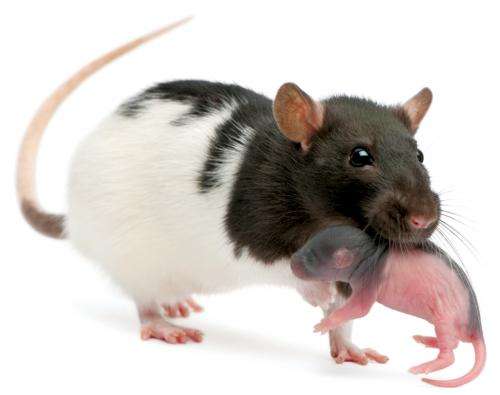Young mammal infants are calmed when carried—but not just held—by their mothers.
The bond between mother and child is the first and most important relationship for all mammals, including humans. Mammal infants are born with innate behaviors to seek closeness to their mothers and become distressed when separated from them, but the physiology underlying this response is largely unknown. Kumi Kuroda of the RIKEN Brain Science Institute and colleagues have now shown that being carried has a calming effect on infants, successfully identifying some of the brain mechanisms involved.
Kuroda and her colleagues recruited 12 healthy human infants aged between 1 and 6 months and recorded their heart rate, movement and crying while they were held or carried by their mothers. They cried and kicked more often when simply held by their mothers while seated and displayed an associated elevated heart rate. When carried by their mothers while walking, however, the infants became significantly calmer and adopted a characteristic posture in their mothers' arms.
The researchers found a similar calming response in mouse pups during maternal carrying. Like human infants, mouse pups also become still, cease their vocalizations and show a decreased heart rate when carried.
Kuroda's team then either blocked the pups' sense of touch using a local anesthetic, abolished their sense of balance by surgical damage to the vestibular organ of the inner ear, or abolished their proprioception, or 'muscle sense', with a toxic overdose of vitamin B6. Only pups without a sense of touch or proprioception failed to exhibit the calming response when carried, suggesting that the response depends upon these two senses rather than balance.
The researchers also found that mouse pups with genetic mutations that cause malformations of the cerebellum—a brain region involved in the control of movement—had abnormal postures during carrying, as did pups with surgical damage to the cerebellum. Finally, the team also showed that the calming response makes it easier for the pups to be carried.
"Infants with autism are reported to have difficulties adjusting their bodies to parental holding," says Kuroda. "Cerebellar abnormalities are among the most consistent neuropathological findings in autism, so we are now trying to test the hypothesis that children who develop autism may have atypical responses to maternal carrying."
"We would also like to identify the brain areas required for orchestrating the output components of the calming responses in the mouse model, and further investigate the human calming response to carrying," she adds.
More information: Esposito, G., et al. Infant calming responses during maternal carrying in humans and mice, Current Biology 23, 739–745 (2013). www.cell.com/current-biology/r … ii/S0960982213003436
Journal information: Current Biology
Provided by RIKEN





















